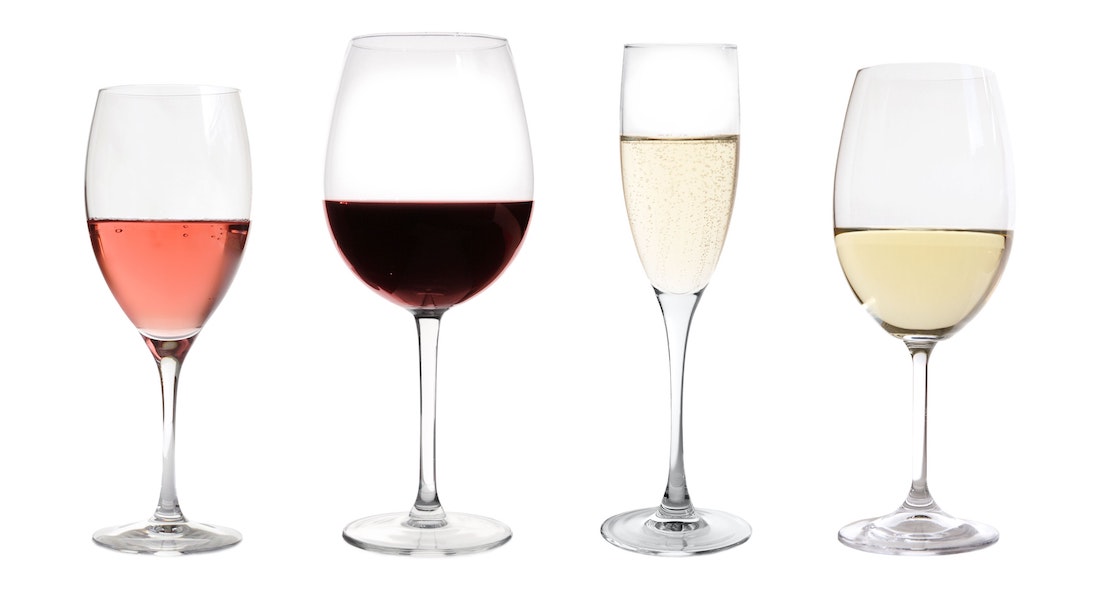Are you drinking out of the right wine glass?
Stemware is a hot topic at the moment. At least, it is in the drinks world.
Just as fashionistas are musing over which jeans to wear this summer – slim-fit, cropped or ankle grazing – wine enthusiasts are waxing lyrical about the joys of a good glass, weighing up the size of the bowl and whether the flute is ‘so passé’.
After much swirling, smelling, tasting, spitting (and no doubt a few broken glasses along the way), science and our senses tell us the right glass can make all the difference – and enhance the pleasure, aromas and flavour of a wine.
Of course, you can happily drink the finest burgundy out of a mug or the best fizz from a plastic cup, but when crystal manufacturers have gone to great lengths to heighten our drinking enjoyment, it’s only fair – when possible – to show the wine some respect and serve it in the right glass.
Booze with bubbles

“If you love bubbles, you’ll have witnessed the trend for tulip glasses and the retro revival of coupe and champagne saucers,” says Richard Halliday, commercial director, Dartington Crystal. “But there’s a reason why the flute is a timeless classic that still deserves its place in our drinks cabinet.”

“Flute glasses are tall vessels, which allow bubbles to accumulate and deliver sharp and dense effervescence. This height allows for an enduring visual appeal in watching the bubbles rise. Many flutes even have a discreet nucleation point etched into their inner base to create a steady, vertical stream of fizz.
“When the sparkling wine has complexity, depth and autolytic (yeast) notes, such as fine champagnes, then the best option is to use a white wine glass in order to let the aromas express themselves better.”
“For bone dry crémant and cava, a flute preserves the bubbles, keeps the wine colder for longer and offers the perfect party-friendly serving,” adds Halliday.
Still wines
When it comes to still wines, you don’t need to go mad and buy a different shaped glass for every type of wine – you just need to remember some key factors, such as the size of the bowl.

“The glass is definitely a tool to balance the flavour contributions in a wine – including fruitiness and acidity – but you don’t need a dedicated rosé glass,” says Halliday.
“Just avoid a big-bowled, wide-rimmed goblet. Anything suspiciously oversized with a rounded bowl will dissipate the delicate floral aromas associated with rosé and dull its acidic notes.”

As for whites, use the same smaller, rounded bowl and when you pour the wine, only fill the glass halfway so you can swirl it around and allow the aromas to develop. For oak-aged whites such as chardonnay, larger bowls will give the tropical, toasty notes space to evolve.

When it comes to your favourite red, larger, rounded bowls allow the flavours to develop. Medium sized bowls work well for burgundy and lighter reds such as beaujolais.

While an oversized, larger bowl suits a weightier wine such as a cabernet sauvignon or bordeaux blend, because the wine has more space to breathe and it lessens the tannins.
As for stemless, it’s all a matter of preference and technically, stems don’t affect the taste of the wine. But why would you want to cup your hands round a bowl and inadvertently warm the wine, when you can reach for an elegant, tall stem?
The Press Association
Latest posts by The Press Association (see all)
- 5 new books to read this week - November 23, 2024
- 3 easy Mary Berry recipes to make this season - November 22, 2024
- In Pictures: Party stalwart kept New Labour in touch with traditional supporters - November 21, 2024
- 6 easy indoor exercises to try this winter – and why they are good for you - November 19, 2024
- Martin Clunes: I can’t afford to retire – I’ve got too many horses - November 19, 2024





















